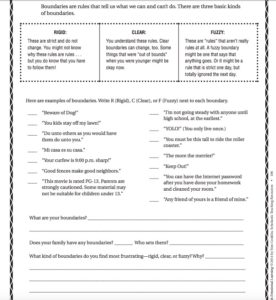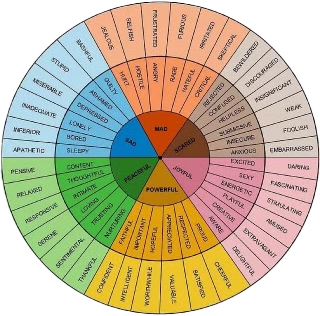


Are you teaching your child how to maintain healthy boundaries?
Providing our children with a healthy boundary skill set is critical in ensuring that they are not victims of guilt, bullying, manipulation, being pathological pleasers and abused (emotionally and physically).
As mentioned in a previous blog, when I was raised my parents and grandparents celebrated and valued initiative. Since birth, the typical pleasing tendency manifested and combined with this valued behaviour in a huge way. I constantly felt the need to nurture, fix, share and lead. I was known at high school as Sr. Mary Catherine. I think many of my classmates saw me more as a mother figure than a playful peer. After awhile the super hero cape becomes part of your persona. Recently, I have learned through Alanon the importance of boundaries and saying no without guilt or worry. I’ve learned to honour other people’s journeys and respect that sometimes those journeys are meant to come with painful lessons, that can’t be avoided.
So how do we help ourselves and our kids set healthy boundaries? First, we need to teach our children to take responsibility for their own happiness. We need to have the courage to tell people how we want to be treated. It’s giving people ‘I’ messages in a positive and kind manner. It is okay to respectfully say no to people when a request is being made that violates our personal physical or emotional boundaries. We need to say not to situations and behaviour that hurts us and is disrespectful. We need to let people know that our tolerance for certain things is not at their level of tolerance (this is particularly important when our kids are being pressured into behaviour that is uncomfortable or excessive for them). We need to let them know it’s wonderful to help and share but when their ‘tummy’ is telling them that the other person is taking advantage or treating them disrespectfully or dismissively then it is time to stop. If that person is only giving them attention when they get something in return, then it is time to stop. These are discussions that are life long and change depending on our age and circumstances. Above all we need to surround ourselves with people who energize us and are positive. Yes, we need to be tolerant and patient with those who are needy and demanding BUT we can choose to limit how much time we spend with those who tend to bring us down.
Second we need to take a lesson from our classrooms on giving timely feedback. Often teachers will evaluate work and behaviour with two stars and a wish. It is a great strategy for communicating to others, in a variety of life circumstances, what we like and what is working and what can be improved. In giving two positives, the person listening is first hearing what they are doing right which in turn leaves them open to considering the points of growth. Also the focus is on what you can’t do but celebrates what you are doing right. The wish is not a judgement that something is wrong or a failure but that it can be improved. The feedback process focuses on learning and communicating is a journey not a war to be won.
Boundaries create safety for everyone. Communicating the parameters is respectful and compassionate. We all have our limits.
Dazzle’s Challenge: Begin a discussion about boundaries by working through this sheet with your children https://www.scholastic.com/content/dam/teachers/articles/migrated-files-in-body/setting_boundries.pdf

Quick Take Away Links: So true teaching others on how we want to be treated
https://www.huffpost.com/entry/law-of-attraction_b_3418430
Great article with innovative examples of how to role model
https://galileo-camps.com/why-galileo/blog/feedback-how-tos/
https://www.destination-innovation.com/a-great-way-to-give-feedback-two-stars-and-a-wish/ https://www.assessmentforlearning.edu.au/professional_learning/peer_feedback/peer_strategies_enhance.html
Parenting and life
https://www.drcloud.com/ https://childmind.org/article/teaching-kids-boundaries-empathy/
Boundaries
https://positivepsychology.com/great-self-care-setting-healthy-boundaries/






